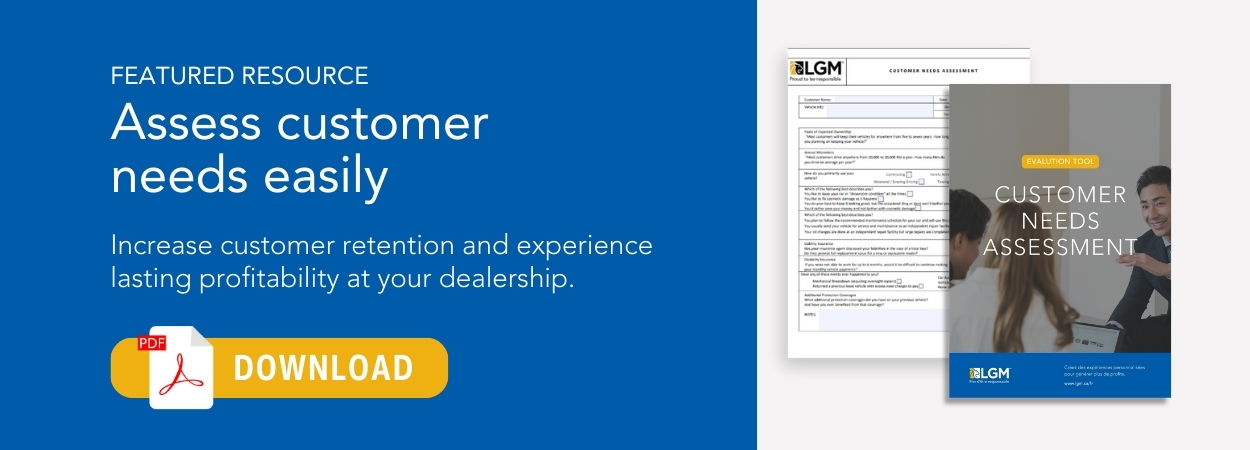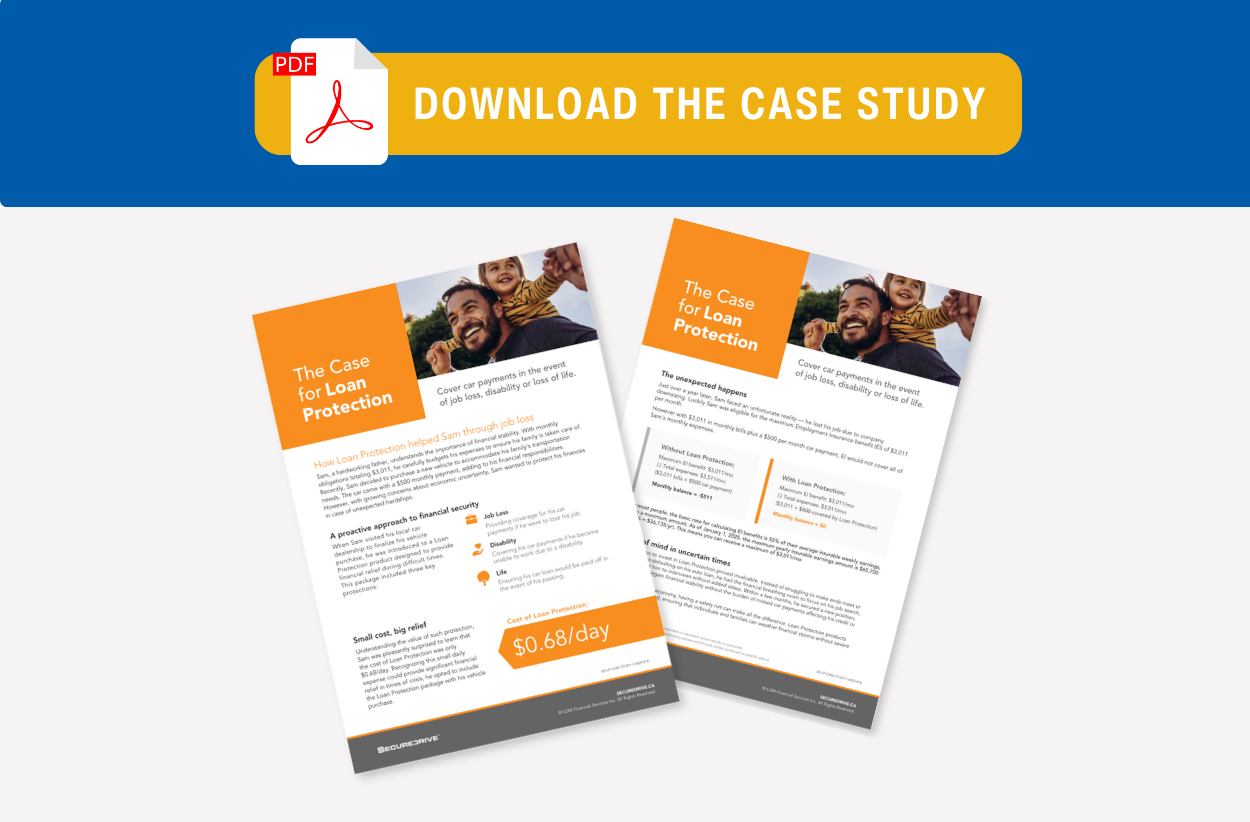While advancements in technology have led to remarkable improvements in car safety, efficiency, and the overall driving experience, there’s an undeniable trend towards homogeneity among brands in the automotive industry. This is a challenge for dealers and OEMs as customers have become less loyal to a brand due to the increasing indistinguishability among them.
In a homogeneous market, dealers need to focus on the key driver of retention: consumer experience. This article will discuss how, through the experiences they create – particularly in relation to finance and insurance (F&I) – automakers and dealers can develop a loyal consumer base and retain their business for years to come.
Standing out with consumers is all about experience
In this competitive environment where automakers are constantly matching each other in terms of innovation, consumers are rich for choice of quality products. This in turn has resulted in a decline in overall consumer loyalty among automotive brands year over year according to J.D. Power’s 2023 study. Since OEMs and dealers can no longer retain customers solely based on brand differentiation, they need to focus their efforts on what they can control and what is the key to retention – delivering exceptional experiences.
Current studies show that consumer perception of automotive brands is “based on their accumulated direct and indirect experience with the products that constitute those brands”. In cases where they have little experience with the product, consumer perception is shaped by outside sources, like “word of mouth, product reviews, and safety ratings”.
Challenging homogeneity through distinctive F&I experiences
While it may seem like an arduous undertaking, controlling the consumer experience has always been in the hands of the dealer. As we dive deeper into strategies for improving customer experiences, we will focus on actionable tips to deploy in the business office. Given that F&I is historically associated with causing customers stress due to the financial decisions and complexity of paperwork involved, dealers who nail these interactions are sure to stand out and win points with customers.
The right F&I strategy can ease customer anxieties and create positive dealership experiences through personalization, streamlined processes, and gathering and adapting to feedback.
Strategy 1: Personalization for engaging interactions
Today’s consumers are emotionally in-tune and need to feel that brands are tailoring experiences specifically to them. This demands higher involvement and emotional intelligence from F&I sales staff to build a comprehensive understanding of exactly who their customer is before getting down to the product offerings.
Successful dealers have implemented customer analysis tools into their online and in-person sales processes. These tools typically involve a brief but detailed questionnaire to help the salesperson (or algorithm) tailor the experience based on their findings. Not only will the salesperson be able to offer more relevant products, but more importantly, they’ll be able to adapt their communication style to create a more attuned experience.
Here’s an example of personalization in action:
Nadia visits a dealership. It’s her first time visiting in-person, but she has been researching her options online and emailing several salespeople to gather more information for a few weeks. She decides to visit “Dealership A” because of the positive digital interactions she’s had so far with her salesperson.
After test driving a few vehicles and making a decision, Nadia is introduced to F&I manager, Joon. Joon follows the specific steps below to ensure Nadia receives a personalized experience:
- Gathering information:
Joon has already received a brief overview of Nadia’s needs from the salesperson but must reconfirm what he knows and ask additional questions. He pulls out his customer interview questions to gather more information. He learns about Nadia’s lifestyle, family demographics, budget constraints and credit history, long-term goals, and level of risk aversion.
- Menu selling technique:
After gathering this information, Joon uses the menu selling technique to help Nadia make an informed decision on the protection products that she will most benefit from. Menu selling is a sales technique that often involves technology and allows F&I managers to present a portfolio of F&I products through a non-confrontational platform allowing customers to view multiple protection products that may be of interest.
Based on the comprehensive understanding of Nadia’s needs and preferences, Joon was able to use menu selling to sell Nadia the protection products that are right for her.
- Relationship building and follow-up:
Earlier in their conversation, Joon took note that Nadia has children in school. As they’re finalizing the sale, he notices it’s nearing the end of the school day and checks in to make sure Nadia still has time before needing to pick up her kids. He also regularly provides her with updates on how much longer they have in the process. This small, but thoughtful, gesture is an example of how financial services managers (FSMs) can help put their clients at ease and reinforce that they are aware of their personal needs.
Post-sale, Joon maintains periodic contact with Nadia through email check-ins and exclusive offers tailored to her preferences. By continuously engaging with her and providing value-added services beyond the transaction, the dealership solidifies its position as a trusted partner in Nadia’s automotive journey.
Strategy 2: Streamlined processes for timely service
Another strategy for standing out with customers is ensuring sales processes are streamlined. Putting ourselves in the consumer’s mindset, there is nothing worse than a clunky experience where staff are disjointed, technology doesn’t work, and nobody seems to understand your needs.
Streamlined processes can make all the difference between a satisfied customer and a missed opportunity. To streamline processes successfully, sales processes and the customer journey should be documented, trained, and accessible to all dealership staff. This ensures consistency across all interactions, minimizing errors and reducing unnecessary delays.
Furthermore, leveraging technology integrations plays a crucial role in optimizing sales processes. By implementing comprehensive point of sales (POS) systems, customer relationship management (CRM) systems, digital paperwork solutions, and online communication platforms, dealerships can automate repetitive tasks, streamline channels, and provide real-time insights into customer preferences and behaviors.
Here’s an example of streamlined processes and technology in action:
Our customer, Alex, has just completed paperwork to purchase a new vehicle with his salesperson. Afterwards, his salesperson introduces him to Catherine, the FSM. The salesperson and Catherine follow the steps outlined in their dealership’s turnover process, which is the period during which the customer is transitioned from the care of the salesperson to the F&I office. The salesperson recaps Alex’s information needs and preferences to Catherine so that later in their conversation, Alex won’t have to repeat himself. This collaboration demonstrates an extra level of care and ensures Alex feels comfortable putting his trust in Catherine for the remainder of the sale.
Next, Catherine uses a digitized F&I product menu to tailor protection options based on Alex’s needs and budget. Through a secure digital system, Catherine can quickly retrieve additional tools and documentation to answer Alex’s questions and support the presentation. The system also has a fully integrated POS, ensuring Alex can easily sign and purchase the protection he chooses. Alex is impressed with the hassle-free experience and remarks that Catherine was great at addressing all his questions and concerns.
Later, Alex will be shown to the dealership’s service department and will receive help setting up his first maintenance appointment. There is a strong collaboration between both the front and back of house teams as they continue to make Alex feel confident under their care. He receives their contact details to follow up if he has any concerns and the F&I staff also follows protocol to engage him in further communication after he leaves the dealership.
Through following efficient processes enabled by technological integrations, every aspect of Alex’s journey was designed to exceed expectations, leaving a lasting impression and fostering a sense of loyalty towards the dealership.
Strategy 3: Feedback gathered for consistent improvement
Feedback is a powerful tool for enhancing a dealership’s online reputation and provides invaluable insights that drive continuous improvement in their processes. By soliciting feedback from customers, whether through online reviews, surveys, or direct interactions, dealerships gain firsthand insights into what aspects of their service resonate most positively with consumers. Positive feedback can help the dealership attract prospective customers who are drawn to the dealership’s commitment to excellence.
Constructive criticism enables dealerships to identify areas for improvement and make consistent adjustments to their processes. Whether it’s refining sales techniques, streamlining paperwork procedures, or enhancing post-purchase support, this ongoing feedback loop ensures that dealerships are always striving to deliver the best possible experience for their customers.
Here’s an example of a dealership who gathers customer feedback:
Remember Nadia? Our customer from Strategy 1? After her positive experience with Joon, she receives a digital invitation to provide an online review. Because she was so impressed by her experience with Joon, and the efforts he made to personalize the offerings, she gives the dealership a five-star rating and provides a detailed account of her excellent experience. Her raving review is seen by dozens of prospective buyers from her town who’re researching where to purchase their next vehicle. Nadia’s review stands out among the homogenous online presences of their local dealerships, and in turn, brings more visitors to their website and eventually through their doors.
Partnering with the right F&I provider
The partnership between OEMs or dealerships and F&I providers plays a pivotal role in shaping the overall customer experience. It’s crucial for OEMs and dealerships to align themselves with F&I providers who share their mission of delivering superior customer experiences. These providers should not only offer comprehensive products and competitive financing options but also establish a pathway for customer satisfaction through robust sales processes, training that equips F&I managers with relevant skills, and innovative technologies to stand out in a digital world.
By prioritizing meaningful F&I partnerships, OEMs and dealerships can set themselves apart in a competitive market and build lasting relationships with their customers.
LGM offers innovative F&I experiences and solutions for dealers.
In Canada, LGM stands out as a leading F&I provider, empowering over 1,400 dealers and more than 10 OEMs to thrive in the competitive market. From tools to enhance personalization to cutting edge digital solutions, LGM helps build long-lasting customer relationships and stays ahead of the curve in an ever-evolving industry.
For more information on how LGM can help you or your dealership improve customer experiences and retain more business, please contact Sales@LGM.ca.




